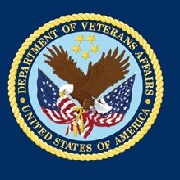Veterans Affairs Processes Only 66% of Claims in 30 Days
The results illustrate that Veterans Affairs completed only 66 percent of medical claims in 30 days or less, which is the agency's required time frame for processing billing.

- The Medicare program, Medicaid coverage, and the Children's Health Insurance Program are not the only public payers offering assistance to the American people. Veterans Affairs (VA) also ensures that those in the military receive access to necessary healthcare services. However, a recent report from the Government Accountability Office (GAO) shows that the VA is not reimbursing all medical providers in a timely manner.

The results illustrate that Veterans Affairs completed only 66 percent of medical claims in 30 days or less, which is the agency's required time frame for processing billing. The GAO compared these results to data from the Medicare and TRICARE programs, which showed that these agencies were able to process 99 percent of medical claims in 30 days or less.
Additionally, the results may even be skewed in favor of the VA since it doesn't account for the delays of scanning paper claims, which take up 60% of all billing. GAO officials discovered that it takes an average of two weeks for paper claims to be scanned into the system at VA facilities. In fact, one Veterans Affairs site had a bin of paper claims waiting to be scanned for more than one month.
Two years ago, a report from GAO recommended Veterans Affairs to comply with a policy of scanning all billing paperwork upon receipt into the claims processing system. Unfortunately, these recent findings show that the VA has failed to follow this recommendation.
The majority of providers who were surveyed in the report claimed that there is an administrative burden when it comes to sending medical information and billing data to the VA. When inquiring about claims, providers stated that VA officials have not been very responsive.
There are a number of issues that the VA will need to address, the report said. For instance, staffing shortages as well as subpar technologies are making it more difficult to process claims in a timely manner. In addition, manual processes are also leading to delays with regard to paying providers within the 30 days time limit.
The Veterans Health Administration has recently attempted to address some of these problems by filling staff vacancies as well as eliminating some medical documentation requirements. Nonetheless, the agency will not be providing solutions to all of these obstacles until fiscal year 2018, the GAO report stated.
With regard to ending medical documentation requirements, VA Under Secretary for Health Dr. David J. Shulkin said in a public statement: “This administrative step just makes sense. It ensures Veteran access, timely payments and strengthens our partnerships with our Choice providers. We know that providing Veterans access to high-quality, timely healthcare would be impossible without collaboration with our community providers.”
It may behoove Veterans Affairs officials to incorporate automatic processing so that these delays can be prevented. The agency is currently attempting to find ways to improve its claims processing system but has not provided any details of a sound plan. The GAO report recommends Veterans Affairs to attempt the following:
“To help provide reasonable assurance that VHA achieves its long-term goal of modernizing its claims processing system, the Secretary of Veterans Affairs should direct the Under Secretary for Health to ensure that the agency develops a sound written plan that includes the following elements:
• a detailed schedule for when VHA intends to complete development and implementation of each major aspect of its new claims processing system;
• the estimated costs for implementing each major aspect of the system; and
• the performance goals, measures, and interim milestones that VHA will use to evaluate progress, hold staff accountable for achieving desired results, and report to stakeholders the agency’s progress in modernizing its claims processing system.”
The VA did announce this past March that it has formed a community care call center under the Veterans Choice Program in which providers and veterans could receive assistance with improper and/or delayed medical claims payments.
This center will be used to help veterans who are being billed by medical facilities improperly due to a delay in reimbursement from Veterans Affairs. The Veterans Choice Program allows veterans to receive and access medical care outside of VA healthcare facilities.
“The Choice Act provides, among other things, temporary authority and funding for veterans to obtain healthcare services from community providers to address long wait times, lengthy travel distances, or other challenges accessing care at a VA medical facility,” the GAO report explained. “Under this authority, VHA introduced the Veterans Choice Program in November 2014.”
The VA has assured providers that it would pay claims within 30 days, but has failed to live up to its promise. Many medical facilities outside of the VA system are having significant delays in receiving payment and end up billing the veterans themselves for the services received.
The problems seen within the Veterans Affairs agency could be troublesome for the future if it continues to fail to provide timely payments for healthcare providers. Its reliance on community providers may be in jeopardy if physicians aren't reimbursed more efficiently.
Dig Deeper:
Does Value-based Care Hurt Single Physician Practices?
Beneficiary Incentive Programs Advance Patient Engagement
